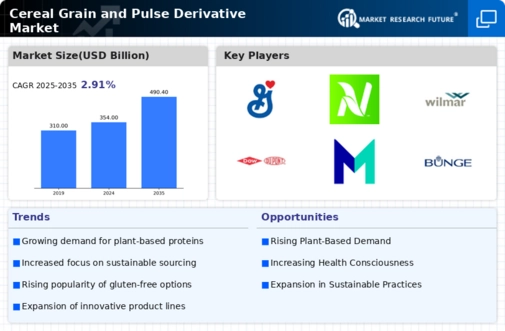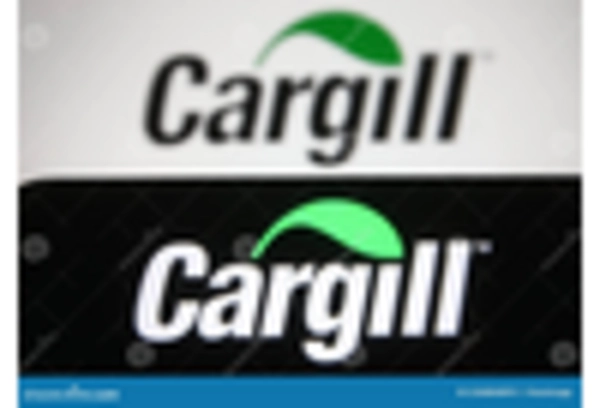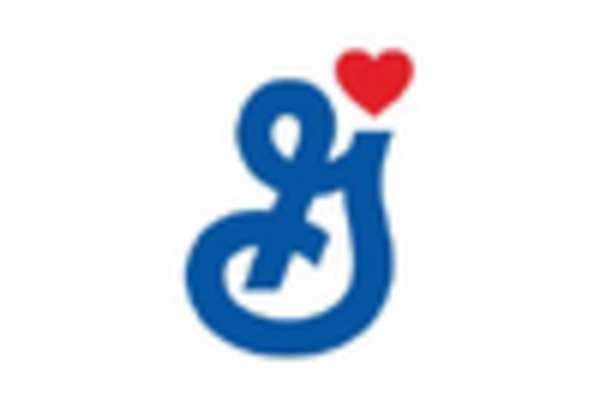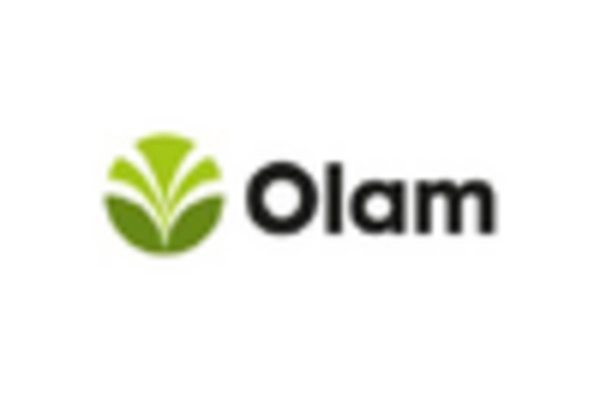Focus on Nutritional Fortification
Nutritional fortification is becoming a key driver in the Cereal Grain and Pulse Derivative Market. As consumers become more health-conscious, there is an increasing demand for products that offer enhanced nutritional benefits. Manufacturers are responding by fortifying cereal grains and pulse derivatives with vitamins, minerals, and other functional ingredients. For instance, the addition of protein and fiber to breakfast cereals and snack bars is gaining traction. In 2023, the fortified food market was valued at approximately 50 billion USD, with expectations of continued growth. This focus on nutritional fortification not only meets consumer demands but also positions the Cereal Grain and Pulse Derivative Market favorably in a competitive landscape.
Increasing Demand for Gluten-Free Products
The Cereal Grain and Pulse Derivative Market is witnessing a notable surge in demand for gluten-free products. This trend is primarily driven by a growing awareness of gluten intolerance and celiac disease among consumers. As a result, manufacturers are increasingly focusing on developing gluten-free alternatives derived from various cereal grains and pulses. In 2023, the gluten-free food market was valued at approximately 5 billion USD, with projections indicating a compound annual growth rate of around 9% through 2028. This shift not only caters to health-conscious consumers but also opens new avenues for innovation within the Cereal Grain and Pulse Derivative Market, as companies explore diverse formulations to meet this rising demand.
Technological Advancements in Food Processing
Technological advancements in food processing are significantly influencing the Cereal Grain and Pulse Derivative Market. Innovations such as extrusion technology and enzymatic treatments enhance the nutritional profile and functional properties of cereal grains and pulses. These advancements enable manufacturers to create products that are not only healthier but also more appealing to consumers. For instance, the use of high-pressure processing has been shown to improve the shelf life and safety of pulse-based products. As of 2023, the food processing technology market is estimated to be worth over 100 billion USD, indicating a robust investment in this sector. This trend suggests that continued innovation will likely drive growth and diversification within the Cereal Grain and Pulse Derivative Market.
Sustainability Initiatives and Eco-Friendly Packaging
Sustainability initiatives are increasingly shaping the Cereal Grain and Pulse Derivative Market. Consumers are becoming more environmentally conscious, prompting companies to adopt eco-friendly practices in sourcing and packaging. This includes utilizing sustainable farming methods for cereal grains and pulses, as well as implementing biodegradable or recyclable packaging solutions. In 2023, the sustainable food market was estimated to be worth around 30 billion USD, reflecting a growing consumer preference for environmentally responsible products. This trend indicates that companies within the Cereal Grain and Pulse Derivative Market that prioritize sustainability may gain a competitive edge, appealing to a demographic that values ethical consumption.
Rising Popularity of Ethnic and International Cuisines
The Cereal Grain and Pulse Derivative Market is experiencing a shift in consumer preferences towards ethnic and international cuisines. This trend is fueled by globalization and increased exposure to diverse culinary practices. As consumers seek authentic flavors and ingredients, there is a growing demand for traditional grains and pulses used in various cultural dishes. For example, lentils and chickpeas are gaining popularity in Mediterranean and Middle Eastern cuisines, leading to a rise in their incorporation into mainstream products. Market data from 2023 indicates that the ethnic food market is projected to reach 100 billion USD by 2026, suggesting a substantial opportunity for the Cereal Grain and Pulse Derivative Market to capitalize on this trend.

















Leave a Comment